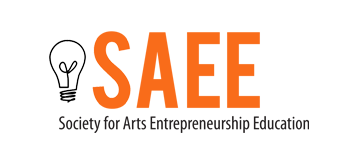Abstract
Prospective art and design students have little doubt that entering the creative sector is their purpose and calling. However, one of the main concerns for students and their fami-lies when deciding whether to enroll in a specialized college is the ability to earn a living wage upon graduation. Colleges and universities, particularly art and design schools, respond to this concern by increasing access to arts entrepreneurship programs. Arts entrepreneurship offerings provide practical guidance students can apply in business development and more broadly while seeking financial self-sufficiency working in the creative sector. This essay offers insights into how faculty teaching arts entrepreneurship courses can best engage students in colleges of art and design. Specifically, this writing explores the unique dynamics of an art and design college and how the fundamental practices of these institutions can inform arts entre- preneurship educators in their classrooms. First, I consider the role of self-reflection in the development of artists and designers. Next, I explore how critical thinking and creative problem solving are present in art and design curricula. Then I reference the core practice of critique, which is present across creative disciplines in art and design pedagogy. Last, I conclude that when considered together, self-reflection, critical thinking, creative problem solving and critique all connect with teaching core entre- preneurial theories, methods and skills to prepare art and design students for a financially sustainable creative life after college.
Recommended Citation
Rueff, Stephen
(2020)
"Creative Freedom: Arts Entrepreneurship as a Mindset,"
Journal of Arts Entrepreneurship Education: Vol. 2:
Iss.
1, Article 5.
DOI: https://doi.org/10.46776/2693-7271.1011
Available at:
https://digitalcommons.memphis.edu/jaee/vol2/iss1/5


